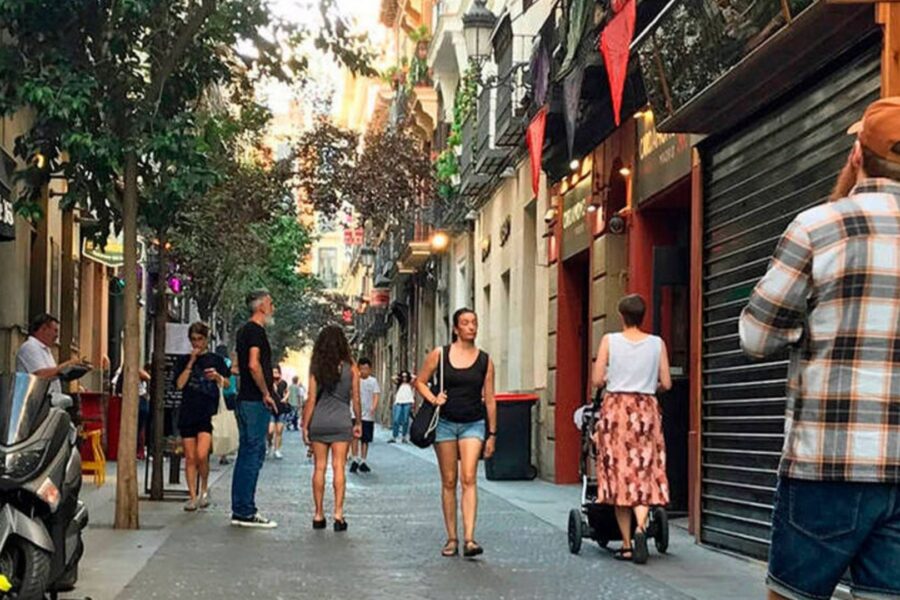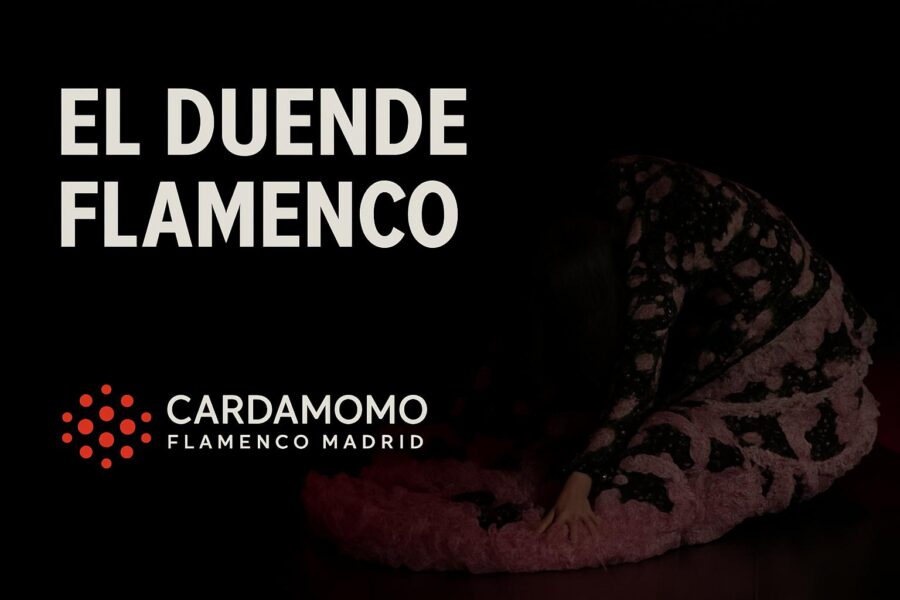

Experience the energy of flamenco like never before, so close that you will be part of the show.
PURE FLAMENCO. The most exclusive flamenco show in Madrid

4 daily shows with weekly programming

Since 1994. Meeting place for the greats of flamenco

The most exclusive tablao. Smaller capacity and closer proximity to the artist

With a weekly programme that presents the best artists on the world flamenco scene. More than 8 artists on stage display the purest flamenco

Cardamomo offers 4 daily passes with different shows and artists every week

Located in Madrid’s historic center, just steps from Puerta del Sol, the exclusive Canalejas mall and the famous Plaza de Santa Ana.

Everyone is welcome at Cardamomo. Find out about children’s tickets, more accessible seats or tickets for residents.

You can live the experience like a true Madrilenian and complete the flamenco experience with a selection of tapas.
Taste a selection of typical and quality tapas, while enjoying more pure flamenco.



Madrid has its fair share of tablaos (flamenco venues). Cardamomo is one not to miss. What is a visit to Madrid without some traditional entertainment? You are assured of this at Cardamomo.
— luxos.com
“El mejor flamenco en Madrid. Yo los he visto todos por cuestiones profesionales y es la primera vez que uno me gusta y me impacta. por primera vez he visto un espectáculo de flamenco para todo el mundo, no dirigido a turistas. Paloma Fantova soberbia y Kelian Jiménez lleno de fuerza. Un gran espectáculo para pasar una velada.”
— Luisiramos, TripAdvisor
All the spontaneity and raw passion of flamenco where a knowledgeable crowd gathers for live performances many weeknights from around 10.30pm. It’s all about a cantaor (flamenco singer) and guitar maestro, and this evocation of flamenco’s Andalusian roots ensures that Cardamomo is where the great flamenco performers really feel at home.
— The Guardian
Live music is thriving in Madrid, from classical and opera to blues, rock and jazz, but the speciality is flamenco. It may seem odd that the music of the south is so important up here, but there are two reasons for that: first, a lot of Andalusians have made their homes here, and second, any flamenco artist worth his salt wants to play the big tablaos — dinner shows — in el capital. Cardamomo is the real deal, catering to a crowd that knows its bulerias from its soleas. There are three sessions a night, at 6pm, 8pm and 10pm, and, obviously, you’ll go to the latter.
— The Times
Far from what we expected, the Tablao Cardamomo left us speechless, amazed and above all proud to be from here and to know that this culture is also ours. The rest of the people who packed the Tablao and the tables -many foreigners but also many Spaniards- had to enjoy it to the fullest.
— thewotme.com
Esta cookie se utiliza para almacenar el consentimiento del usuario y las opciones de privacidad para su interacción con el sitio. Registra datos sobre el consentimiento del visitante en relación con diversas políticas y configuraciones de privacidad, garantizando que sus preferencias se respeten en futuras sesiones.
This cookie is used to ensure the secure submission of forms on the website, enhancing security and user experience by preventing CSRF (Cross-Site Request Forgery) attacks.
Esta cookie se utiliza para recordar la preferencia de idioma elegida por el usuario para proporcionar una experiencia personalizada mostrando el sitio web en el idioma seleccionado en futuras visitas.
Este nombre de cookie está asociado a Google Universal Analytics, que es una actualización significativa del servicio de análisis más utilizado de Google. Esta cookie se utiliza para distinguir usuarios únicos mediante la asignación de un número generado aleatoriamente como identificador de cliente. Se incluye en cada solicitud de página de un sitio y se utiliza para calcular los datos de visitantes, sesiones y campañas para los informes analíticos de los sitios.
Esta cookie es utilizada por Google Analytics para mantener el estado de la sesión.
Esta cookie se utiliza para rastrear e informar sobre las interacciones del usuario en el sitio web, como las páginas visitadas o la forma en que el usuario navega por el sitio. Esta información se utiliza para mejorar la experiencia del usuario y optimizar el rendimiento del sitio web.
Youtube instala esta cookie para hacer un seguimiento de las preferencias del usuario en relación con los vídeos de Youtube incrustados en sitios web; también puede determinar si el visitante del sitio web está utilizando la versión nueva o antigua de la interfaz de Youtube.
Esta cookie la instala YouTube para hacer un seguimiento de las visualizaciones de los vídeos incrustados.
Utilizado por Google AdSense para experimentar con la eficacia de los anuncios en los sitios web que utilizan sus servicios.

